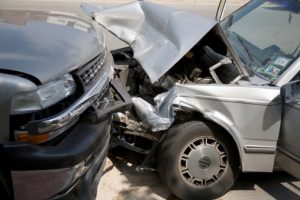 In October, a wrong-way driver was killed and another motorist suffered injury in Texas after a driver traveled southbound in the northbound lane. The Houston Chronicle reports police were still uncertain about when or why the driver entered the freeway going in the wrong direction.
In October, a wrong-way driver was killed and another motorist suffered injury in Texas after a driver traveled southbound in the northbound lane. The Houston Chronicle reports police were still uncertain about when or why the driver entered the freeway going in the wrong direction.
This head-on crash was, like so many others, a tragic accident that ended with a fatality. Wrong-way accidents are far more likely than other crashes to be deadly. The National Transportation Safety Board assembled data from various studies showing there are as many as 12 to 27 percent higher fatality rates in wrong-way accidents compared with other crash types. Because these crash types are so often deadly, understanding the causes of head-on crashes in Texas is essential to saving lives.
A Closer Look at Texas Wrong-Way Crashes
Alcohol is a significant factor in wrong-way crashes. NTSB obtained data from the Fatality Analysis Reporting System and found approximately 60 percent of wrong-way accidents occurred when the driver who was going in the wrong direction was intoxicated at the time of the incident. Further, around nine percent of drivers in wrong-way crashes had a prior conviction for an impaired driving offense in the three years before the crash. This is approximately three times the rate of past impaired driving convictions for motorists who were not going the wrong way.
Seniors are also at risk of wrong-way driving, but for different reasons than younger drivers. Drivers aged 70 and up are "over-represented" in wrong-way head on collisions. There were almost 2.5 times more wrong-way drivers age 70 to 79 as compared with drivers aged 60 to 69, and there were almost 30 times more wrong-way drivers above age 80 as compared with drivers between the ages of 70 and 79.
Senior drivers, unlike younger motorists, are not usually drunk when they become involved in wrong-way accidents. Instead, they may be more likely to get into these types of collisions because natural cognitive declines in aging affect their abilities or because prescription drugs affect their driving abilities. Among Americans age 60 and over, 76 percent are taking at least two prescription drugs during the month. These prescriptions can contribute to confusion, as can the natural aging process.
In some cases, neither alcohol nor age are the reason for the wrong-way crash. Instead, drivers simply become confused or disoriented. This is an especially big problem with poorly designed roads. The U.S. Department of Transportation Federal Highway Administration indicates a partial cloverleaf design at the entrance to a highway entrance ramp creates a greater risk of a wrong-way crash than other road designs. These designs involve entrance ramps and exit ramps that are adjacent and parallel, so drivers turning left are forced to go past the wrong road to get on the right one. The left-turners may mistakenly turn onto the wrong ramp.
Drivers need to stay sober, seniors need to ensure they do not drive once their cognitive function has declined, and drivers need to pay careful attention to road signs in an effort to bring down the rate of wrong-way head on crash accidents.

